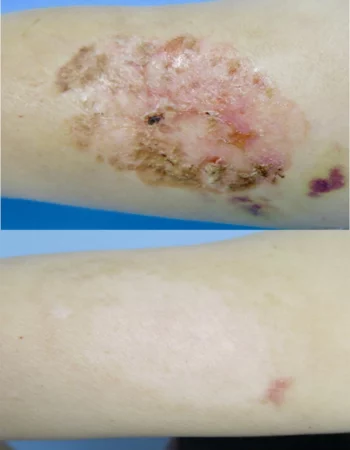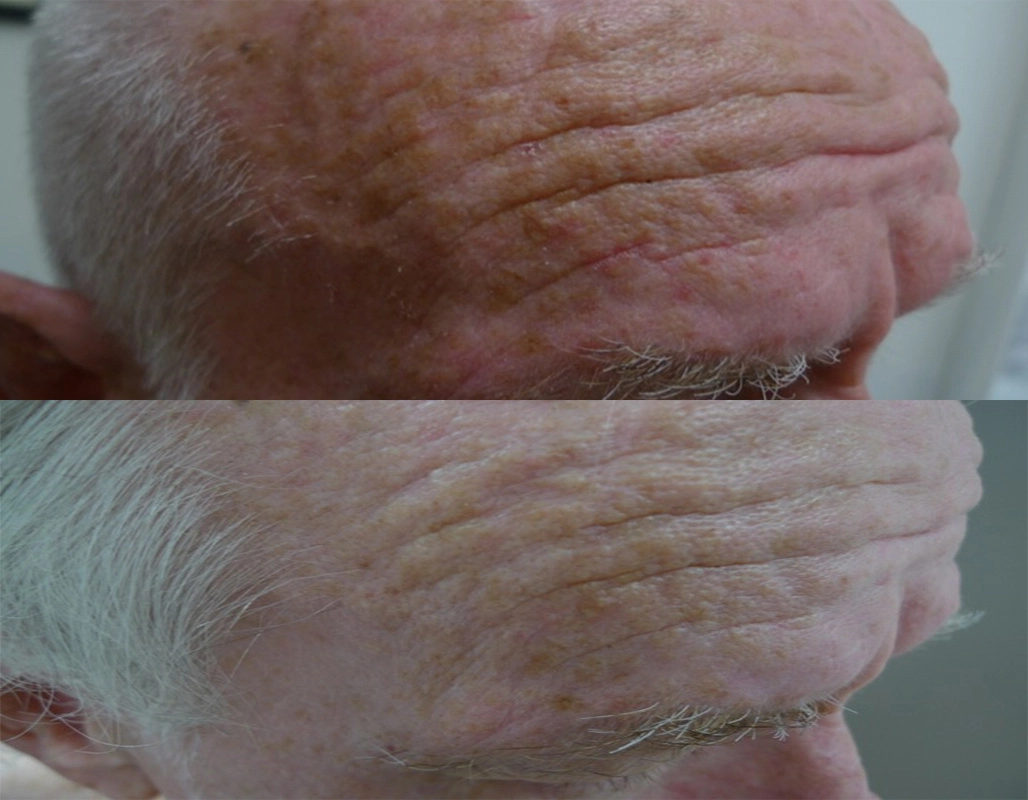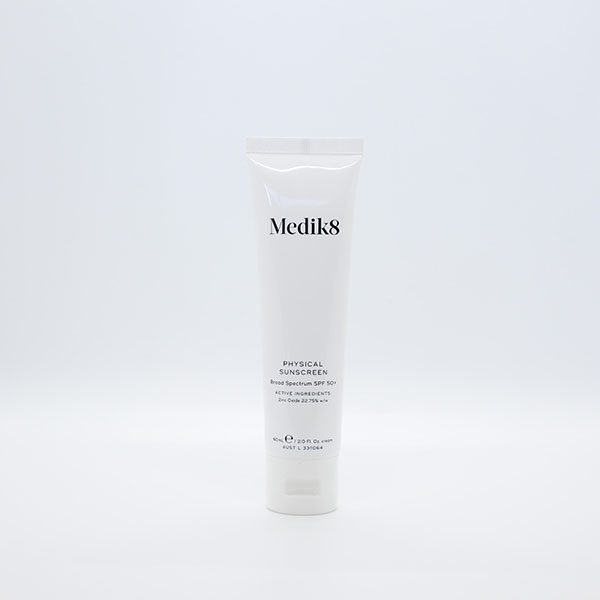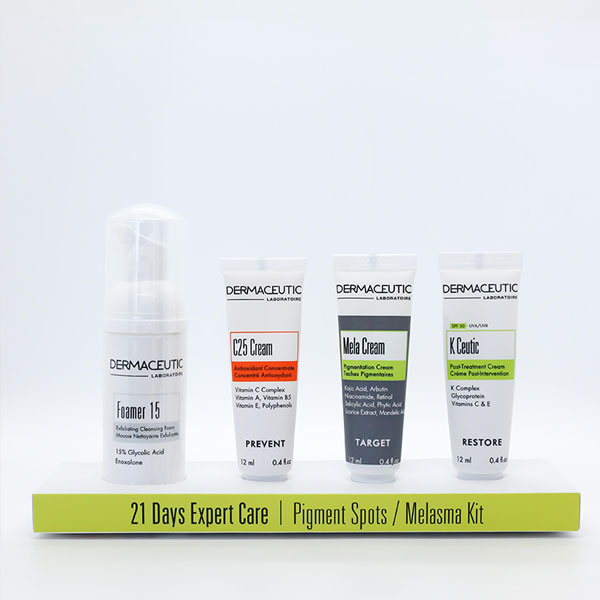Moles can be removed on cosmetic grounds. The treatment of choice is with a shave excision or loop radiofrequency as these methods leave no scarring. The best method to ensure complete removal is with traditional excision with sutures. Your dermatologist will advise you on both methods, depending on the context of removing your mole/s.
Key Points
- Shave & loop RF excision of moles gives the best cosmetic outcome
- This method removes the upper layer of the mole without the need for sutures
- Heal time is 5-8 days, depending on location
- Shave excision has a higher rate of recurrence
- In exceptional cases we can employ lasers to treat moles
Mole Removal at a glance
Our results speak for themselves

Before
After

PDT therapy for skin cancer
Ask us more about this treatmant
Preferred Consultation

Before
After

Excision + 1927 thulium overpass to
adjacent solar keratosis
Ask us more about this treatmant
Preferred Consultation

Before
After

Erbium nano-micro-laser-peel. 5 days
downtime. Suitable for sun damage &
pigment in lighter skin types
Ask us more about this treatmant
Preferred Consultation
FAQs
Can moles be removed on cosmetic grounds alone?
Cosmetic mole removal can be performed because you are self-continuous or unhappy with your mole. Moles can also be removed if they are causing problems by getting caught on your clothing or shaving-combing hair.
What factors do dermatologists consider prior to removing moles on cosmetic grounds?
Dermatologists will always consider if this is the correct treatment for you. We base our decisions to give you the best cosmetic outcomes possible. This depends on-.
- The type of mole- superficial vs deep
- The colour of the mole
- The location
- Your skin type & ethnicity
- Your age
How do we perform mole removal?
The two techniques that are used by dermatologists & plastic surgeons to remove moles are:
- Shave excision: This addresses the raised portion of a mole. A shave flattens the top, leaving a flat surface that may still contain the deep part of the mole.No stitches are required after this kind of mole removal. Scars are exceedingly rare with this technique. There are 3 types of shaves-
- Cold blade free hand shaving
- RF loop shaves
- Laser ablation shaves
Surgical excision: the entire mole is cut out, along with a small border of normal skin. The wound will then need to be closed with stitches. Your mole will be traded for a scar that is typically 3 times longer than the mole.
Does the mole grow back?
It may, especially if you have a shave excision or RF loop excision. It’s known as the ice-berg effect. When moles are removed, they should never be scalloped or over corrected. This means the superficial aspects are removed, but the deeper parts of the mole are not taken out (or you will have a divot or depression).
The cells remaining at the base of the mole have the potential to multiply, & hence recurrence may be seen.
What’s the go with hairy moles?
A shave, by free hand blade, loop RF, or even blade & laser will only remove the mole itself & not the hairy part, as it lies in the deeper tissue. Hence in most cases you will be left with a flat mole. With hair sticking out of it.
Hair can be subsequently removed with electrolysis or laser hair removal.
What is the most common side effect of loop radiofrequency excision of moles?
By far the most common side effect is over correction, meaning moles are scalloped by the doctor, leaving a depression. Our dermatologist will see at least one to two cases a week from other clinics, especially cosmetic clinics offering this service.
What is the difference between cosmetic mole removal vs diagnostic mole removal?
Cosmetic, as the name implies, is an elective procedure for patients who don’t like the look of the mole.
Conversely diagnostic mole removal is when your dermatologist does not like the look of your mole because it could be cancer.
What is the treatment of choice for permanent mole removal?
Surgical excision with primary closure. This means the mole is cut out, sent for testing & the defect is sutured. This treatment is performed to exclude melanoma, & as a definitive treatment for recurrent moles.
Do we test the mole for cancer once removed?
Yes. Dermatologists & plastic surgeons will always test the mole to ensure it is benign. Testing is under Medicare & bulk billed.
Is it painful?
No, we use local anaesthetic to numb the area before removal. Pain is minimal after the surgery.
How long is the healing up time following mole removal?
For shaves, loop RF & lasers, it is about 5 to 9 days, depending on the size of the mole, & the site.
For excision, it varies between 8 days to 14 days. Your wound will still be compromised for up to 4-6 months after excision, hence it should be taped.
Our dermatologists will guide you through what types of moles can be removed with minimal scarring. We employ techniques such as excision, shave excision, as well as radiofrequency treatments.
What are the risks of mole removal?
Potentially lots, hence you will need to carefully think it through They include-
- Recurrence. This is highest following shave & loop RF treatments, lowest with surgical excision with sutures.
- Scars. Are highest with surgical excision, lowest with shave excisions.
- Pseudo melanoma. Highest with lasers, & RF loop excisions.
- Altered look. Highest with shaves, lasers & loops.
How do we manage depressed scars from mole removal?
Depressed scars are secondary to over correction. It happens when your doctor uses RF loops or tries to over-correct mole removal. In 40% of the time, this may self-correct over 6-12 months.
If it doesn’t, we can inject with saline, or hyaluronic acid dermal filler. The choice depends on the level of atrophy & the location of the mole.
How do we manage hypertrophic scars secondary to mole removal?
This type of scarring is best treated with steroid injections or 5 FU injections. In resistant cases we use CO2 fractional lasers. It takes 2-6 sessions to flatten, sometimes more.
How do we treat recurrence & altered moles from mole removal?
With difficulty. It’s not easy as your primary provider has altered the moles architecture. Treatment options include-
- Laser to blend in (yikes)
- Surgical excision
- Photography & serial monitoring
Can pico lasers remove moles?
Yes, but it is not recommended as lasers can predispose moles to give a pseudo melanoma appearance. We also don’t like it as recurrence is high.
Dermatologists apply lasers to moles in exceptional cases, including-
- Management of moles that are of significant concern cosmetically
- In patients with a very low risk of melanoma (ethnics, Asians)
What is the danger of laser surgery & moles?
Google the word pseudo-melanoma. This means lasers can change the architecture of a mole, mimicking a melanoma. A melanoma is a serious cancer & hence if the mole has suggestions of cancerous change, you will require a wide excision. Additionally, some patients may not be eligible for life insurance if branded with a melanoma history.
Are we against RF loop excision of moles / scarless mole removal?
The side effects from this cosmetic procedure, in many cases far outweigh the cosmetic outcomes. You don’t need a loop to remove moles. In fact, free hand blade shaving is much faster, safer, & better than loop excision. Dermatologists & plastic surgeons are trained in free hand flexy blade shaving. This gives a flush excision without scalloping.
Loop RF, as the name suggests, uses a loop. This digs into the dermis, scallops out more cells at the detriment of a divot or depression. If performed correctly it can give good results, however in most cases it’s upsizing your Big Mac to justify a higher bill from your doctor.
Can you freeze moles?
Yes, you can, but it is not a good idea. This will result in uneven scarring, often with patchy areas of pigment, normal skin & lighter skin. It is dangerous & the cosmetic outcomes resemble a cigarette burn.
Can I have a tattoo over a mole?
Yes, but there goes all hope of picking up skin cancers. Pigment over a mole disrupts the normal pigment network of moles. Additionally solid colours will also hide new spots.
If you have pale skin, here is a sobering fact- you have a 66% chance of developing skin cancer at some point in life. If a cancer occurs in a tattoo site, chances are it’s picked up very late.
How do you check your own moles?
Choose a room with a mirror & plenty of good light as this will help you to see more clearly. Using your phone to take photos will give you a reference point to track any changes.
Carefully check every nook & cranny for anything unusual. Melanoma & skin cancer are usually associated with sun damage, so pay particular attention to exposed areas, however they can appear in unusual areas such as the nail beds & soles.
If you notice anything that looks suspicious or has changed, then you should consult your dermatologist.
How often should you get your moles checked?
Checking moles regularly will enable you to pick up any changes in them. Performing a self-mole check on yourself once a month is a good idea, but your dermatologist might also recommend coming in for regular checks if you are at risk of skin cancer.
Skin check intervals performed by dermatologists’ range between 3 months for high-risk individuals to 18 months for lower risks. Timely skin checks mean that any developing skin cancers will be spotted as soon as possible so that they can be removed before they get a chance to cause any complications.




